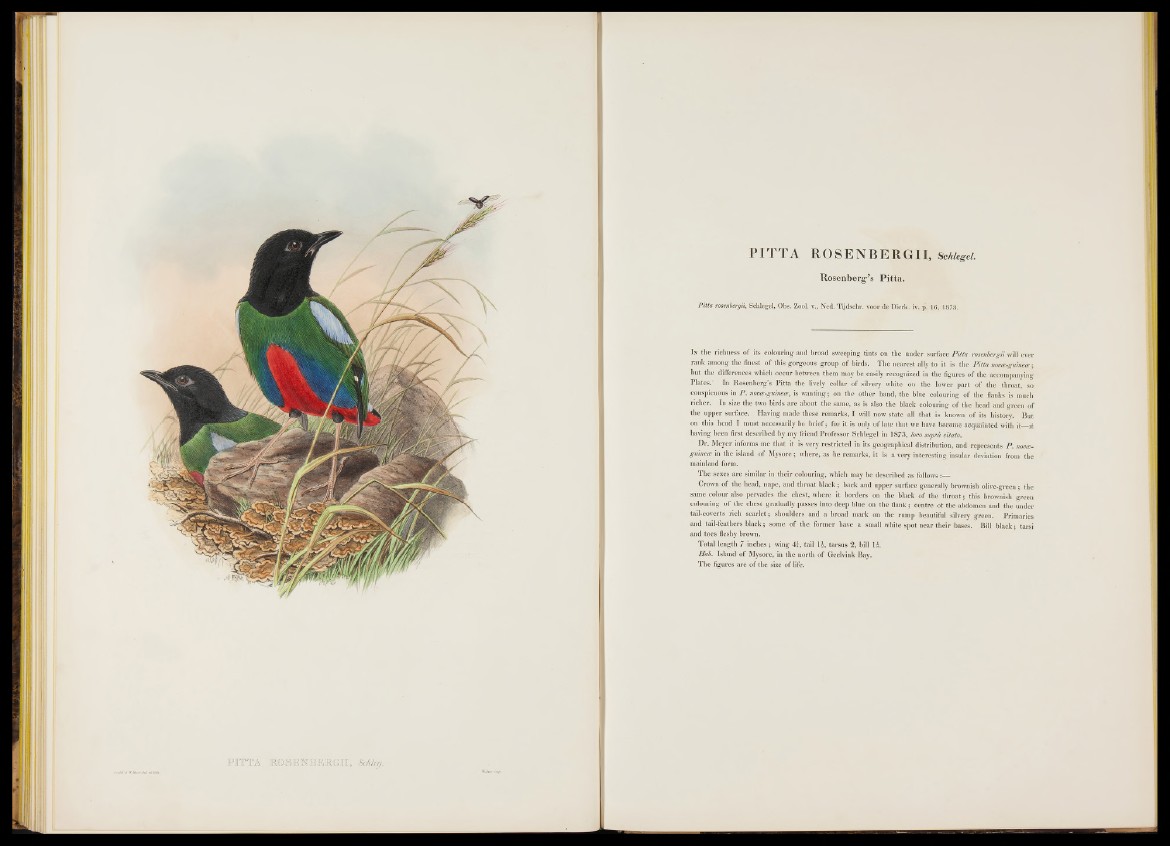
FITTA ROSENBERGII, Schleg.
PITTA ROSENBERGII , Schlegel,
Rosenberg’s Pitta.
Pitta rosenbergii, Schlegel, Obs. Zool. v., Ned. Tijdschr. voor de Dierk. iv. p. 16, 1873.
I n the richness of its colouring and broad sweeping tints on the under surface Pitta rosenbergii will ever
rank among the finest o f this gorgeous group o f birds. The nearest ally to it is the Pitta novce-guinece;
but the differences which occur between them may be easily recognized in the figures o f the accompanying
Plates.' In Rosenberg’s P itta the lively collar of silvery white on the lower p a rt o f the throat, so
conspicuous in P. novcs-guinece, is wanting; on the other hand, the blue colouring of the flanks is much
richer. In size the two birds are about the same, as is also the black colouring o f the head and green of
the upper surface. Having made these remarks, I will now state all th at is known o f its history. But
on this head I must necessarily be b rie f; for it is only of late th at we have become acquainted with it it
having been first described by my friend Professor Schlegel in 1873, loco supra citato.
Dr. Meyer informs me th a t it is very restricted in its geographical distribution, and represents P . nooce-
guinea in the island o f Mysore; where, as he remarks, it is a very interesting insular deviation from the
mainland form.
The sexes are similar in their colouring, which may be described as follows:—
Crown o f the head, nape, and throat black ; back and upper surface generally brownish olive-green; the
same colour also pervades the chest, where it borders on the black o f the th ro a t; this brownish green
colouring o f the chest gradually passes into deep blue on the flank; centre o f the abdomen and the under
tail-coverts rich scarlet; shoulders and a broad mark on the rump beautiful silvery green. Primaries
and tail-feathers b lack ; some o f the former have a small white spot near their bases. Bill black; tarsi
and toes fleshy brown.
Total length 7 in ch e s; wing 4£, tail l i , tarsus 2, bill 1&.
Hob. Island o f Mysore, in the north o f Geelvink Bay.
The figures are of the size o f life.